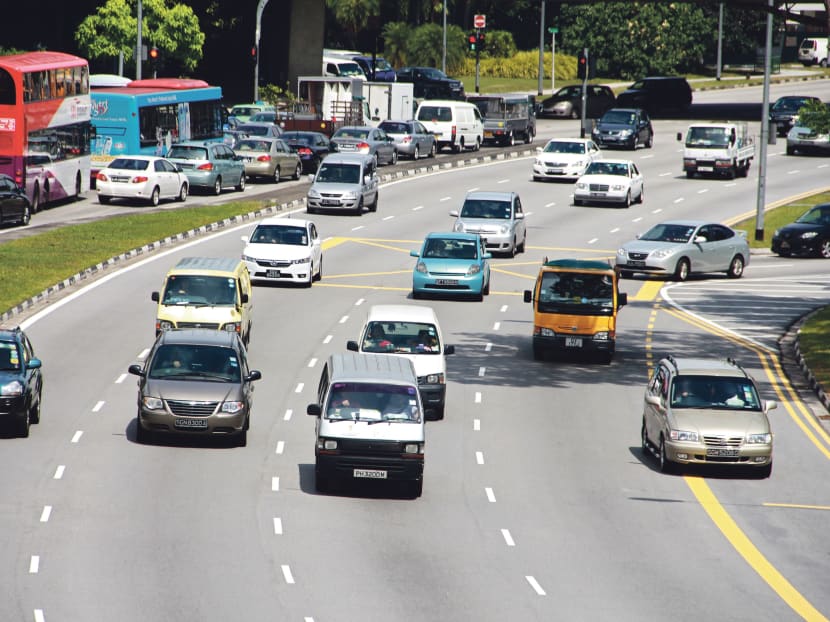Set minimum number of COEs to prevent price swings
Much has been said about Certificate of Entitlement (COE) prices, which have increased significantly since the record lows during the financial crisis. As Singapore heads into its third round of three-monthly COE quota allocation, prices are still high and the possibility of more wild swings continues to loom.
Much has been said about Certificate of Entitlement (COE) prices, which have increased significantly since the record lows during the financial crisis. As Singapore heads into its third round of three-monthly COE quota allocation, prices are still high and the possibility of more wild swings continues to loom.
The three-monthly COE allocation period introduced in January this year was aimed at making the system “more responsive” to market changes, compared with the previous six-monthly interval, as explained by the Land Transport Authority (LTA) when it announced the change.
While well intentioned, such responsiveness to the market could instead have the unintended consequence of introducing more price swings in the COE market.
The supply of COEs is derived largely from the number of vehicles deregistered in the preceding three months.
The concern now is how the expected peak in deregistration over the next few years will cause price instability. From the fourth quarter of this year until 2018, an annual average of 100,000 cars will reach the end of their COE lifespan of 10 years and will have to be deregistered unless their COEs are renewed.
This number is more than twice the 41,501 vehicles deregistered in 2013.
This will be good news for car buyers in the next few years, as there is likely to be an increase in COE quotas and a fall in premiums after the vehicles are scrapped. But as deregistration drops and the COE quota tightens after 2018, we can expect the roller coaster prices of COEs to be on an upward trajectory again.
HOW A MINIMUM QUOTA WORKS
My recently published research findings show that such price swings need not happen. We can actually design a COE market with more predictable premiums.
My study investigated the circular relationship between premiums, deregistrations and COE quotas across the COE categories. In 2009, for example, the annual growth allowance for motor vehicles was lowered from 3 per cent to 1.5 per cent. This resulted in higher COE premiums, fewer deregistrations and thereby lower COE quotas.
My study also looked into whether there should be a minimum quota for the various categories.
It found that the minimum threshold per bidding round for small cars in Category A is about 800 COEs.
Based on data collected between March 2002 and March this year, premiums rose by S$13 for every one reduction in COE quota below this threshold. Conversely, above the threshold, premiums rose by S$1 for every one reduction in COE quota, all other things being equal.
Since April 2010, whenever the number of available COEs fell below the threshold of 800, buyers had an average of 507 COEs to bid for in each auction held twice a month.
Prior to that, when there were more than 800 COEs, the average number available in each auction was 1934. To put it simply, the findings indicate an average difference in premiums of about S$17,000. (The difference of 1,934 and 507 multiplied by the difference of S$13 and S$1.)
High premiums also discouraged bidding whenever the number of COEs fell below 800.
There were similar findings for Category B (big cars) and E (open).
It is important to break the vicious circle in which high COE prices deter current owners from deregistering their cars because they do not want to pay more for a new car. Ultimately, low COE quotas compel genuine car buyers to put in high bid prices to secure a COE.
To address this, we could consider implementing a system of “borrowing” from the future, in order to supply a minimum number of COEs to help mitigate sharp rises in premiums.
Minimum quotas of 800, 700 and 500 COEs in each auction, or at least 48,000 COEs annually, can be set for Categories A, B and E, respectively.
When this spurs more deregistrations and the number of COEs exceeds the threshold quota, the numbers could be adjusted down to return the borrowed COEs and thereby keep the car population in check.
This will temper the volatility in COE quotas and thereby the premiums. If the “borrowing” system had been in place, with a minimum number of COEs per bidding cycle, premium levels for Categories A, B and E could have been between S$30,000 and S$50,000, according to historical patterns.
We are at the beginning of a four-year bumper season, which inevitably means that a dry spell will follow.
A “banking” system has also been suggested by some to address this — “banking” is the opposite of “borrowing” as it entails saving COEs from the present for allocation in future lean times. My research, however, could not figure out a rational way to decide how many COEs to “bank”.
“Banking” may also be a political hard sell as it implies that the car population will be below stated targets, when COEs are saved rather than allocated.
If nothing is done by the time the dry spell is back, borrowing from future quotas may help avert the lofty premiums we have seen in recent times.
ABOUT THE AUTHOR:
Chu Singfat is an associate professor of decision sciences at the National University of Singapore Business School.







